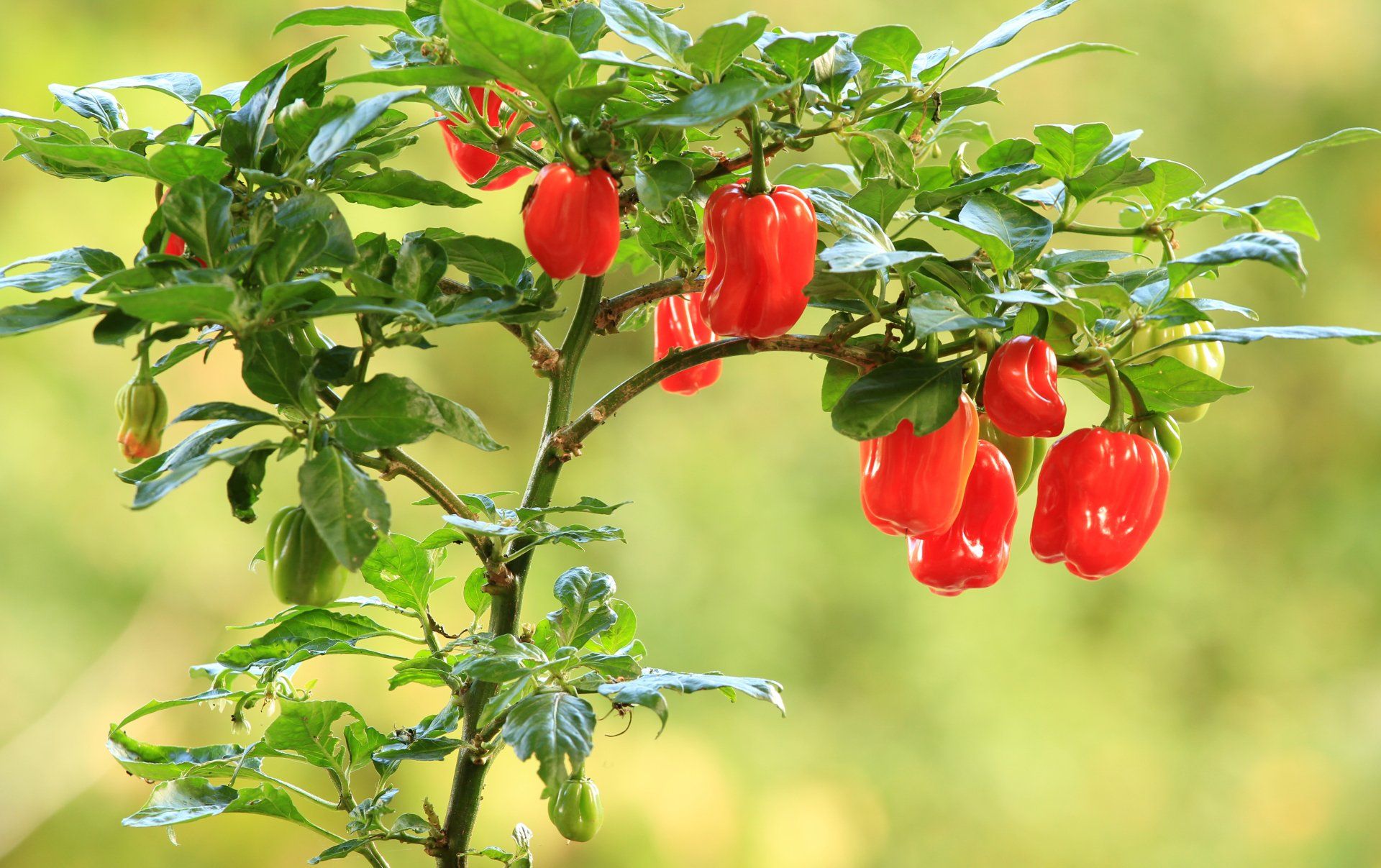Chilli
KEY INFORMATION
Height: to 75cm
Spread: to 50cm
Half hardy annual
Full sun / greenhouse
Germination: 7 - 10 days
Harvest: From 13 - 16 weeks
VARIETIES AVAILABLE FROM COLLIE FLOWERS
Chocolate Habanero
SOWING & GROWING SCHEDULE
Sow Indoors: January to April
Sow Outdoors: n/a
Plant Out: June
Harvest: July to October

Growing Guide
Imagine a world brimming with vibrant colors, tantalizing shapes, and a spectrum of heat levels that range from pleasantly mild to mind-blowingly fiery. Welcome to the universe of chillis, where each variety offers its own unique charm and flavor profile. Some chillis surprise with a zesty hint of lemon, while others delight with fruity undertones that dance on your palate.
The fiery kick of a chilli is quantified using the Scoville scale, a fascinating measure of spiciness that dates back to 1912. This scale originally relied on human tasters, who would determine how much water was needed to dilute a chilli extract until its heat became undetectable. These days, sophisticated machines have taken over this task, providing precise heat measurements. For perspective, a score of around 3,000 Scovilles is considered quite hot, while legendary chillies like the 'Carolina Reaper' can soar past the two million mark, challenging even the bravest spice enthusiasts.
While supermarkets offer a decent selection of chillies, the true adventure begins when you cultivate your own. Growing chillies from seed is a straightforward and rewarding experience, and they thrive in containers, making them perfect for sunny patios or balconies.
Sow Chilli Pepper seeds on the surface of a good, free-draining, damp, seed sowing mix and cover with a fine sprinkling of compost or vermiculite. Place seed trays in a propagator until after germination. Do not exclude light as this helps germination.
When seedlings are large enough to handle, transplant into individual 7.5cm pots of compost and grow on in cooler conditions. When plants are well grown and all risk of frost has passed, transplant into grow bags and containers, or plant in well prepared beds of fertile, moist, well drained soil.
Chili peppers may be grown undercover in a greenhouse or polytunnel, or grown outdoors in a sheltered position in full sun. When growing chilli peppers outdoors, gradually acclimatise them to outdoor conditions over a period of 7 to 10 days prior to transplanting them. Space pepper plants at a distance of 50cm apart. Taller varieties of chilli peppers may require staking.
TOP TIPS
For the hottest chillis, put them under stress - stress increases the amount of capsaicin (the compound that produces the burning sensation) in the fruit and that the most effective way to do this is to abuse the plant by snapping off stems, leaves and fruit as soon as fruit starts to set. This mimics the damage caused by predating animals. It will result in a decreased yield but hotter chilli. You can also reduce feeding and watering, just enough to keep them growing but no more,
Chilli plants are actually perennials and will continue to produce fruit for many years if given the appropriate care and attention. Over-wintering, which entails giving your plants special care and attention after they’ve produced fruit, can be very gratifying.
